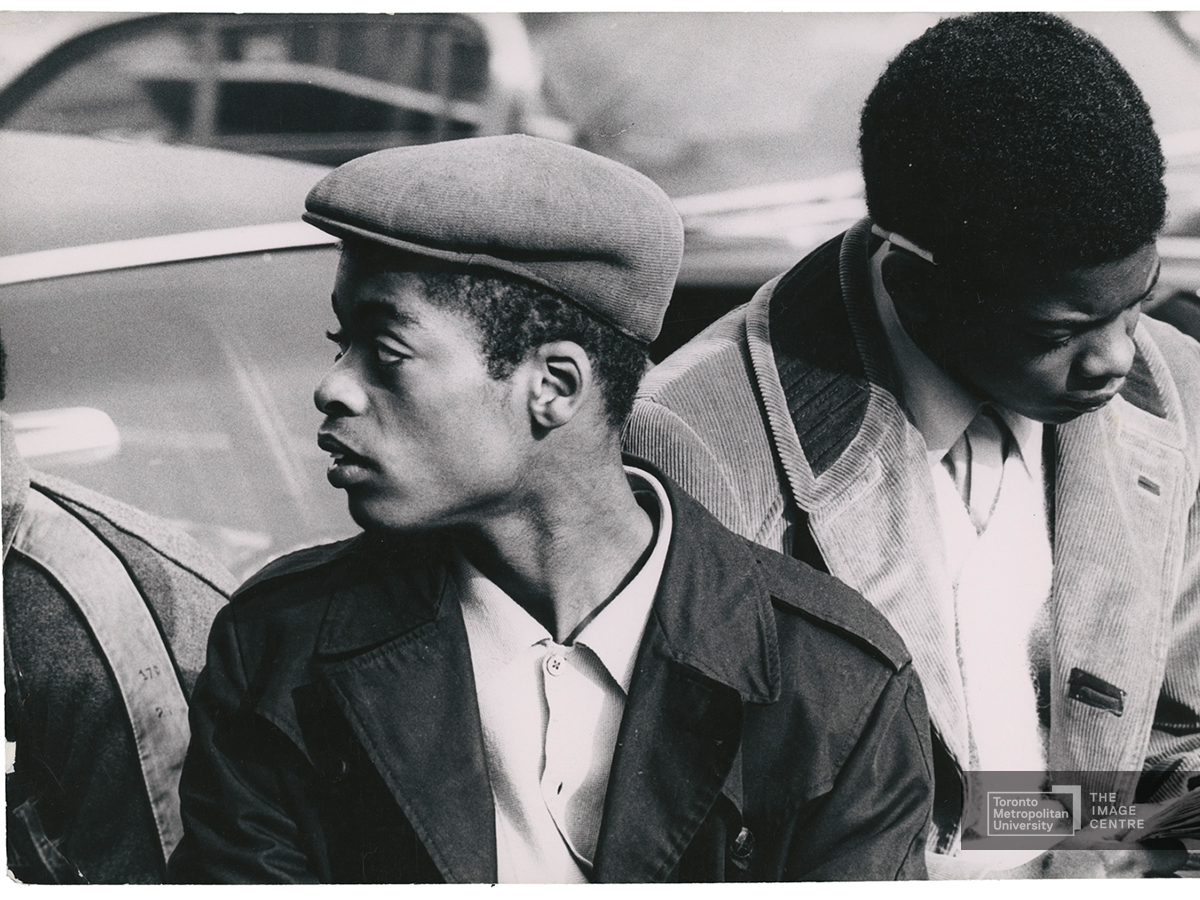Ocean Hill Black Teenagers
Social Bond Theory
Social Bond Theory: youth who are closely bonded with peers, parents and teachers will not have time to engage in crime but also will not want to risk losing these close ties.
Title: Unknown.
Object Type: photograph
Dimensions: 8 x 10 inches; 20.32 x 25.4 cm
Medium: gelatin silver print
Date: 1969
Location: unknown
Accession No: BS.2005.266968
Photographer: Ernest Baxter
Category: The Black Star Collection, Toronto Metropolitan University. Courtesy of The Image Centre.
Inscriptions: Recto, [no inscription]; Verso, handwritten: Oceanhill // Brownsville, 1969 / N.Y.C.; stamped: ERNEST BAXTER / BLACK STAR; handwritten: 3 / 21; stamped: Please, do not alter / mark, or airbrush this / print. / Prints must be returned / after use. / Black Star, Library

Museum Label by Monica Tam and Devendra Sukhdeo, CR8002 : Critical Engagement and Criminological Theories, Winter 2020
Photographer Ernest Baxter was a founding member of the African Jazz-Art Society and Studios (AJASS) in the 1960s. AJASS was a collective of artists, writers, musicians, dancers, and fashion designers. Co-founders Kwame Braithwaite and Elombe Brath were best known for popularizing the “Black is Beautiful” movement. This movement showcased Blackness in its natural state and empowered people of African descent to feel pride in themselves.
Many of Baxter’s photographs were taken in late 1960s New York. His subjects included Caroline Kennedy, former president John F. Kennedy’s daughter, and various series that depict anti-war demonstrations, strikes, and the civil rights movement of 1967-1970. This photograph of two African American teenagers is part of a series that illustrates the aftermath of the Ocean Hill Brownsville school disputes.
The community of Ocean Hill Brownsville, New York City, was primarily made up of African American and Puerto Rican residents. Following New York City’s failure to desegregate its schools as per the 1954 Brown v. Board of Education decision, residents pushed for the community control movement, which granted communities some power to approve curriculums and manage the staffing of teachers. In May of 1968, the dismissal of twelve teachers and seven supervisors in the United Federation of Teachers union incited a series of strikes that caused chaos and tensions between the union and the community board.
As the United Federation of Teachers was primarily made up of white teachers and the community board was made up of African American and Puerto Rican administrators, these strikes contributed to the breakdown of race relations between the two groups. With regular operation of schools being temporarily suspended at this time, students were left idle during school hours and likely spent this time connecting with their families and peers. For African American students, socializing within their racial community may have mediated the difficulty of managing ongoing racial tensions.
Bibliography
- Brier, S. (2014). The ideological and organizational origins of the united federation of teachers’ opposition to the community control movement in the new york city public schools, 1960-1968. Labour/Le Travail, 73(73), 179-193.
- Rosen, M. (2018, January 22). The Photographer Behind the ‘Black is Beautiful’ Movement. Retrieved from https://www.anothermag.com/art-photography/10509/the-photographer-behind-the-black-is-beautiful-movement
- Stivers, M. (2018, September 12). Ocean-Hill Brownsville, Fifty Years Later. Retrieved from https://jacobinmag.com/2018/09/ocean-hill-brownsville-strikes-1968-united-federation-teachers